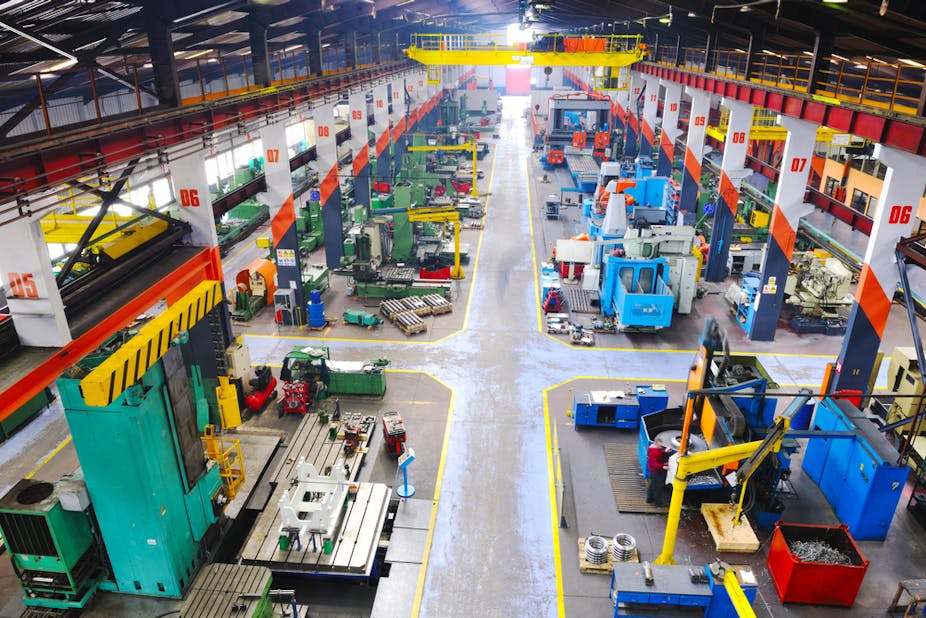“They [the Labor government] haven’t just slowed the growth of productivity, they have actually produced a diminution of Australia’s multi-factor productivity by 3% since the end of 2007. This is a very serious situation.” - Opposition leader Tony Abbott, press conference, 25 July.
Along with a few other areas, the economy is at the forefront of voters’ minds. The opposition has accused the government of economic mismanagement including blaming it for reduced productivity. The government recognises it as an issue; one of Prime Minister Kevin Rudd’s first announcements when he resumed the Labor leadership was to push for a “productivity pact” between government, business and unions.
So is productivity slowing? And is Labor to blame?
What is productivity?
The Australian Bureau of Statistics defines productivity as the “efficiency with which an economy transforms inputs (such as labour and capital) into outputs (such as goods and services)”. If productivity is increasing, it means more goods and services are being produced for each unit of production inputs - for instance, for each worker employed. You can improve productivity through better management and work practices, new technology and reallocating labour and capital from less valuable areas to more valuable areas.
Higher productivity increases a country’s consumption capacity and its living standards. Our official measures of productivity are provided by the Australian Bureau of Statistics (ABS).
Multi-factor productivity is considered the most comprehensive measure because it measures the efficiency of producing goods and services per unit of a combined set of inputs - labour and capital - rather than just one. Annual changes in the Productivity Index provide a measure of the growth or loss of productivity each year.
But caution is required when interpreting productivity measures. First, there are measurement errors. Second, the stage of the economic cycle has an important effect. The table below shows the average growth rate of multi-factor productivity per year for the 1990s, the early 2000s period of the Coalition government, and then under the Labor government.

There has been a marked decline in productivity growth in the last decade or so compared to the 1980s and 1990s. The decline has occurred during the tenure of both of the main political parties.
Who’s to blame?
Abbott is correct to say productivity growth has fallen by 3% since 2007, when Labor came to power. He also lays the blame directly at the government’s door.
In fact, there are a number of reasons for the low and negative growth of productivity in Australia so far this century.
A paper prepared for the Productivity Commission in April last year provides useful insights. Some of the reasons for a fall in productivity are likely to be short term. In particular in recent years the mining boom has seen several hundred billion dollars invested in expanding mining output. But, because of time lags, much of this investment is yet to result in increased output. In the coming years, the current investment boom will result in a large increase of mining output with limited additional investment - a productivity return on investment.
Some other investments, especially in the electricity and water industries this century, have resulted in very small increases in measured output. The ABS measure of productivity shows a fall in productivity. Arguably, capital intensive desalination plants to increase the security of water supply in droughts and investments in electricity infrastructure to meet more extreme peak demands have provided benefits nonetheless.
But governments do have an impact on productivity. The business community, including the Business Council of Australia in its Action Plan for Enduring Prosperity Restoring Prosperity, regularly argues that increases in government regulations, and especially duplicate regulations across the federal, state and local governments, have restricted the ability of businesses to adjust their practices to introduce productivity improvements.
Other government policy actions that would support productivity growth include ending handouts to selected industries, including co-investments for car manufacturers and subsidised loans to some primary producers; taxation reform; simplification of the social security system; and using transparent benefit cost assessments to choose government investments.
The productivity growth rate in Australia is a critical issue for both parties. Australian people have entrenched expectations for further increases in personal expenditures and more government services. Productivity growth is required to meet these expectations.
The anticipated reversal of the short-term forces on recent negative productivity will not be enough to meet current expectations. Then, either proactive government policies to support productivity growth, or a lowering of expectations, will be required over the next few years.
Verdict
Tony Abbott is correct that Australia’s multi-factor productivity has fallen by 3% since the end of 2007. Poor government policy has been an important cause, but not the only cause. As a country, we either increase productivity or reduce our expectations for higher living standards.
Review
This article is a balanced assessment of the recent productivity growth in Australia. Broadly, it is correct to say that multi-factor productivity growth peaked in the mid-2000s. Hair splitters will look to the ABS’s 16-sector measures of multi-factor productivity: that measure actually peaked in 2003-04, not in late 2007, as implied by the opposition leader. And while multi-factor productivity does remain below the level achieved in 2003-04, it actually grew a bit in 2009-10 and 2011-12. Labour productivity for these sectors has grown consistently, with the 2012 full year of labour productivity growth not far below the growth achieved in the golden age of productivity growth in the late 1990s.
The discussion of the potential contributions of policy is also broadly in line with the literature. But of course, the contribution of poor policy has not been measured, so it is only probably true that it’s been an important cause of low productivity growth.

